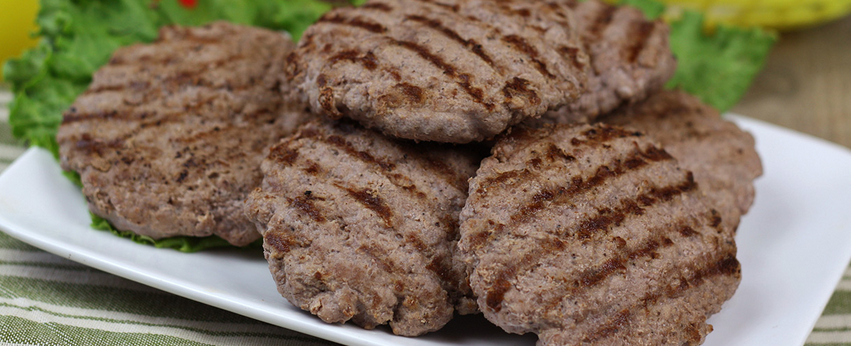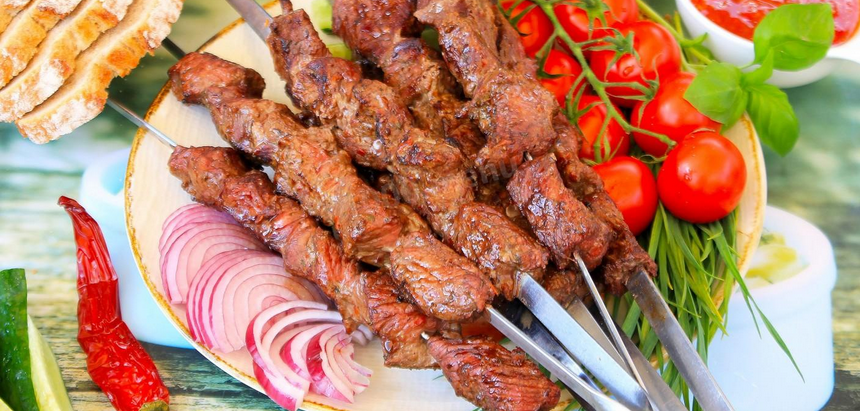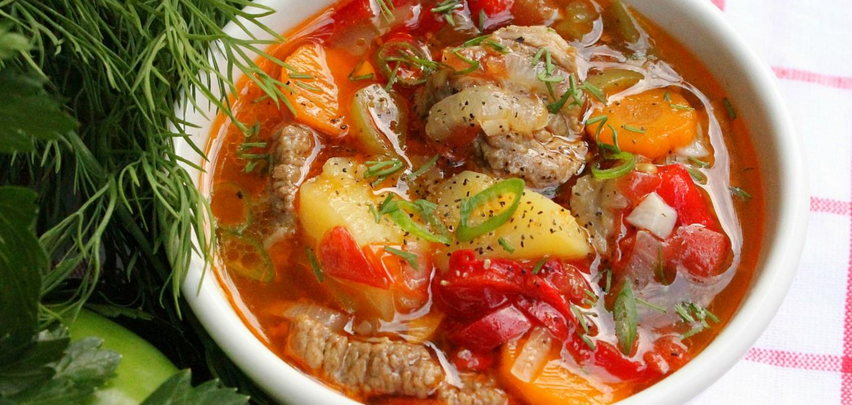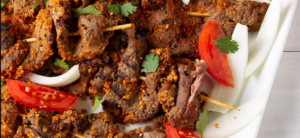Mastering Corned Beef Brisket in the Slow Cooker: A Chef’s Home Kitchen Story

Corned beef brisket is more than just a St. Patrick’s Day classic—it’s a dish steeped in tradition, flavor, and comfort. As a chef in New York, I’ve plated refined versions of this meal in high-end bistros, but let me tell you, nothing beats the slow-cooked version bubbling away in your own kitchen. It’s one of those dishes that brings people together. And with the right ingredients, tools, and a little patience, you can make a fork-tender brisket that melts in your mouth and perfumes the whole house with spiced warmth. So let me guide you, step by step, like I would a new sous-chef in my own kitchen.
- Choosing the Right Cut: Understanding Corned Beef Brisket
- Essential Ingredients for the Best Flavor
- Slow Cooker Setup: Timing, Layering, and Liquid
- Cooking Time and Temperature Comparison Table
- Oven-Roasted Corned Beef Brisket: A Crisp-Edged Classic
- Pressure Cooking for Busy Days
- Microwave Reheat Tips for Leftovers
- Infusing Flavor with Spices and Beer
- Adding Vegetables at the Right Time
- Storing and Reheating Leftovers
- Creative Ways to Use Leftover Corned Beef
- Flavor Twists from Global Traditions
- Perfect Slicing Techniques for Tender Results
- Serving Suggestions for Every Occasion
- Troubleshooting Common Corned Beef Mistakes
- Why This Dish Is Still in My Regular Rotation
- FAQ

Choosing the Right Cut: Understanding Corned Beef Brisket
Before we even turn on the slow cooker, let’s talk about the cut. Corned beef brisket comes in two main styles—flat cut and point cut. If you’re after neat slices and even cooking, go with the flat cut. It’s leaner, has a uniform shape, and works beautifully in sandwiches the next day. The point cut, on the other hand, has more fat and marbling, which means deeper flavor and juicier bites. I personally use the point cut when I’m cooking for a long table of family and friends—it’s forgiving and flavorful.
Also, most briskets sold as “corned” have already been cured in a salt-and-spice brine. Check the label: some come with a spice packet, others are pre-seasoned. Either way, we’ll make sure it’s seasoned right in your pot.
Essential Ingredients for the Best Flavor
A great slow-cooked brisket isn’t about drowning it in water—it’s about layering flavor. Here’s what I swear by when building the base:
- A solid 3–4 pound corned beef brisket
- Baby potatoes or red-skinned waxy ones (they won’t fall apart)
- Carrots, cut thick—this helps them hold their shape
- Yellow onions, halved for sweetness
- Whole garlic cloves, slightly crushed
- Green cabbage wedges (added later in the cook)
- Bay leaves, peppercorns, and mustard seeds if your spice packet’s missing zing
- One bottle of good lager or dark beer (Guinness? Yes, please.)
- Water or low-sodium beef broth to top off the liquid
Every one of these plays a part, like ingredients in a good stew—each adding depth, sweetness, or texture that brings the brisket alive.
Slow Cooker Setup: Timing, Layering, and Liquid
Now we build it like a layered stew. Lay the potatoes and carrots on the bottom of the slow cooker—that’s your vegetable rack. Next, nestle in the brisket fat side up. This lets the fat render slowly, basting the meat as it cooks.
Pour in the beer first—it deglazes any caramelized sugars and infuses that malty, slightly bitter note that balances the salty beef. Then add enough broth or water to just barely cover the brisket. Drop in your garlic, onion halves, bay leaves, and extra spices.
Set your slow cooker to low and give it time—at least 8 hours. Around hour 6, tuck in your cabbage wedges gently on top. They’ll steam beautifully and soak in all those seasoned juices.
Cooking Time and Temperature Comparison Table
Here’s a table I keep on hand in the restaurant’s test kitchen when we’re training line cooks on time control. It’s simple, but it helps hit that juicy sweet spot.
| Method | Temp Setting | Cook Time | Notes |
| Slow Cooker (Low) | ~200°F / 93°C | 8–10 hours | Best texture and deep flavor |
| Slow Cooker (High) | ~300°F / 149°C | 4–5 hours | Works, but meat may be less tender |
| Oven (covered) | 325°F / 163°C | 3–4 hours | Requires a Dutch oven or tight foil seal |
| Pressure Cooker | High Pressure | 90 minutes | Fast and moist, but watch for overcooking cabbage |
| Stovetop Simmering | Low simmer | 3–3.5 hours | Classic method, needs more babysitting |
| Microwave (not ideal) | High, segmented | ~40–50 minutes | Only for small slices; texture suffers |
Oven-Roasted Corned Beef Brisket: A Crisp-Edged Classic
While I love my slow cooker for its effortless magic, sometimes I crave that slightly crisped, caramelized edge only an oven can give. To achieve that, I follow a two-part process. First, I simmer the brisket in a Dutch oven with aromatics—onions, garlic, beer, and broth—for about three hours at 325°F. Then, I transfer the brisket to a roasting pan, brush it with a mustard-honey glaze, and broil it for the final 10–15 minutes.
The result is something you can’t quite replicate in a slow cooker: a tender, juicy brisket with just a whisper of crust. I always serve this version with roasted root vegetables tossed in the rendered juices. It’s what I call “Sunday Dinner Deluxe.”

Pressure Cooking for Busy Days
As a chef, I’ll admit—I used to look down on pressure cookers. But once I had three private dinners and a media event in the same week, I gave in. And honestly? Pressure cooking corned beef brisket is a game-changer when you’re short on time.
Using a 6-quart electric pressure cooker, I place the brisket on the rack above my broth-beer base. In 90 minutes on high pressure, followed by a natural release, I get brisket that’s shockingly close to what 8 hours in a slow cooker achieves. For best results, add the cabbage and potatoes after depressurizing, and simmer for 10 minutes on “Sauté” mode. You’ll preserve their texture and avoid the dreaded mush.
Microwave Reheat Tips for Leftovers
Let’s be honest. No one cooks corned beef brisket in a microwave from raw—not if they respect the meat. But for reheating leftovers? Absolutely. And there’s a right way to do it.
Slice your brisket against the grain, arrange it in a microwave-safe dish with a splash of the cooking liquid, cover it with a damp paper towel or a vented lid, and heat in 30-second bursts. This keeps it moist and avoids that rubbery texture that comes from nuking it dry. If you’re warming up veggies too, give them a separate plate—they reheat faster.
Microwave may be a shortcut, but when handled with care, even this humble box can keep your brisket juicy and delicious the next day.
Infusing Flavor with Spices and Beer
This is where your brisket really becomes your brisket. I love customizing the spice profile depending on who I’m feeding. For a bolder, smoky edge, I’ll add cracked coriander seeds, smoked paprika, and a dash of cayenne to the cooking liquid. When cooking for traditionalists, I stick to black peppercorns, mustard seeds, garlic, and a few whole cloves.
And let’s not skip the beer talk. Light lagers bring out the salt and sweetness of the beef. A stout like Guinness? That’s for when you want richness, depth, and a sauce you can reduce and drizzle. If you don’t drink alcohol, low-sodium beef broth with a splash of apple cider vinegar works beautifully too—it gives the acidity you need to balance the fat.

Adding Vegetables at the Right Time
If you toss all your veggies into the slow cooker at the start, chances are you’ll end up with cabbage mush and disintegrated carrots. Trust me—I’ve done it. Timing is everything. The potatoes and carrots can handle the full cook time because they’re dense. But cabbage? That’s delicate.
I always add the cabbage wedges about two hours before the brisket is done. They steam gently on top, absorbing the briny broth without turning limp. For a deeper flavor, sometimes I sear the cabbage in a cast iron pan with a bit of butter before adding it—this caramelizes the edges and takes the flavor up a notch. Just be sure not to stir the pot once the cabbage is in. Let it rest like a garnish that’s earned its spot.
Storing and Reheating Leftovers
Corned beef brisket makes some of the best leftovers you’ll ever eat—especially when it comes to sandwiches, hashes, or even savory breakfast bakes. I let the cooked brisket cool completely before transferring it into an airtight container with enough of the cooking liquid to keep it moist. Refrigerated, it lasts 4–5 days easily. Frozen? You’ve got a month, maybe six weeks, no problem.
When reheating, you want gentle heat. Use the stovetop or oven set to 275°F with foil and some liquid. In a hurry? Use the microwave tips I mentioned earlier. And don’t forget to slice against the grain before serving again—this ensures every bite stays tender, not chewy.
Creative Ways to Use Leftover Corned Beef
When you’re a chef, no ingredient ever gets wasted. Leftover corned beef is pure gold. I’ve turned it into everything from a classic corned beef hash with crispy potatoes and eggs to cheesy Reuben sliders baked on Hawaiian rolls. One time, for brunch service, I even folded chopped corned beef into a gruyère-stuffed omelet with grainy mustard crème fraîche. The guests thought it was genius—really, it was just leftovers done right.
You can also chop it into soup, layer it in savory pies, or dice it for Irish nachos (yes, those exist). The key is balancing its salty richness with acidity—pickles, mustard, sauerkraut, or sharp cheese all do the trick.
Flavor Twists from Global Traditions
Corned beef isn’t just Irish or American—it’s global comfort food in disguise. I’ve drawn inspiration from around the world to bring new life to this dish in my kitchen.
For a German twist, I use juniper berries, apple slices, and a splash of Riesling in the cooking broth. For a Caribbean-style brisket, I swap in allspice, Scotch bonnet peppers, and a touch of brown sugar. And don’t even get me started on how good it is when cooked with soy, star anise, ginger, and Chinese five-spice. That broth alone is worth bottling.
The point is, corned beef is a canvas—and every culture brings a different brush. Let your taste memory guide you.
Perfect Slicing Techniques for Tender Results
One of the most common mistakes I see—even among skilled home cooks—is slicing corned beef the wrong way. If you cut it with the grain, it turns into chewy strips. Cut against the grain, though, and it practically melts on your tongue.
Here’s my go-to method: let the brisket rest for at least 15 minutes after cooking. That allows the juices to redistribute. Then, identify the direction of the meat’s muscle fibers—usually running lengthwise. Turn the brisket 90 degrees and slice perpendicular to those fibers. Use a long, sharp slicing knife, and aim for ¼-inch thick slices. Thinner slices work great for sandwiches; thicker ones for plated dinners.

Serving Suggestions for Every Occasion
Corned beef brisket can be dressed up or dressed down, depending on your setting. For casual dinners, I plate thick slices with the classic trio: cabbage, carrots, and potatoes, drizzled in the beefy broth. Add a dollop of whole-grain mustard or horseradish cream on the side and it’s heaven.
For fancier occasions, I’ll glaze the sliced brisket with a honey-Dijon reduction and serve it over a bed of mashed parsnips or celery root purée. You can also pair it with a simple green salad dressed in cider vinaigrette to cut the richness. And if kids are at the table? Serve it with buttered rolls for make-your-own mini sliders.
Troubleshooting Common Corned Beef Mistakes
If your brisket turns out tough or dry, don’t worry—it’s fixable. Usually, it means one of two things: you either didn’t cook it long enough, or you sliced it with the grain. Corned beef is a tough cut, and it needs time to break down.
Another issue I see: vegetables turning to mush. This usually happens if you add everything at once. Always stagger your veggies based on density—potatoes and carrots early, cabbage late.
Lastly, avoid over-salting. Corned beef is already cured. If your broth or beer is salty, skip additional seasoning until after cooking. Always taste the final dish before adjusting.
Why This Dish Is Still in My Regular Rotation
As someone who cooks for a living, people always ask what I eat when I’m off the clock. And truthfully? Dishes like this. Corned beef brisket in the slow cooker hits all the right notes—it’s hearty, nostalgic, affordable, and feeds a crowd.
It’s a dish I come back to every winter, not just because it’s easy, but because it reminds me of my roots. My grandmother simmered hers on the stove; I adapted it to modern tools. That’s the beauty of cooking—you carry tradition while adding your own fingerprints.
And if this article gets you to try it for the first time, or reminds you of one long forgotten, then my job here is done.
FAQ
Can I cook corned beef brisket from frozen in the slow cooker?
Technically, yes—but as a chef, I don’t recommend it. Starting from frozen means it takes too long to reach a safe temperature, which can invite bacterial growth. I always thaw the brisket overnight in the fridge first. It ensures even cooking and much better texture.
Do I need to rinse the corned beef before cooking?
I do. Rinsing helps remove excess surface salt from the curing process, especially if you’re sensitive to sodium. Just a quick cold-water rinse will do—you’re not washing off flavor, you’re balancing it.
Should I trim the fat off the brisket before cooking?
Leave the fat cap on. It melts down slowly and self-bastes the brisket during those long hours. You can always trim it after cooking if it’s too rich for your taste, but removing it beforehand sacrifices moisture and flavor.
Can I cook corned beef without beer?
Absolutely. Beer adds complexity, but it’s not mandatory. You can use beef broth, water, or even apple juice for a different twist. Just make sure there’s enough liquid to cover at least 75% of the brisket.
How do I know when the brisket is fully cooked?
It should be fork-tender—not falling apart, but yielding easily. Internally, you’re aiming for at least 190°F (88°C). But I trust feel more than thermometers on this one: if your fork goes in without resistance, it’s done.
Can I add sweet elements like brown sugar or maple syrup?
Yes—and I do, especially for oven finishes. A tablespoon or two of brown sugar in the broth adds a mild sweetness that contrasts the salty beef. For a glaze, mix mustard and maple syrup and brush it on just before serving.
How do I prevent the vegetables from turning mushy?
Timing and placement. Root vegetables go on the bottom early; cabbage gets added later. If you’re really picky, cook the vegetables separately and combine everything right before serving. That’s what I do when plating for events.
Is it safe to leave the slow cooker on while I’m at work?
Yes, if your slow cooker is in good condition. Mine runs for 8–10 hours on low and I’ve never had a problem. Just keep it away from flammable surfaces and make sure the lid is secured tightly.
Can I use a spice packet from another brand or make my own?
Definitely. If your brisket doesn’t come with one, just combine mustard seeds, black peppercorns, coriander, a couple cloves, and a bay leaf. That’s essentially what most packets contain. Toast them first for more aroma.
What’s the best way to slice the brisket for sandwiches?
Cool it first so it firms up—this makes slicing cleaner. Always go against the grain, and aim for very thin slices. A serrated knife or meat slicer works wonders here. I wrap mine in parchment if prepping for multiple sandwiches.
Can I reuse the cooking liquid?
You sure can. I like to strain it and simmer it down into a rich broth. It’s excellent for reheating, or as a base for soup or cabbage stew. Just be mindful—it can be salty, so taste before re-seasoning.
How can I make this dish more kid-friendly?
Cut back on the peppery spices and serve with buttery mashed potatoes or rolls. I also swap the beer for apple juice or broth when I know picky eaters are coming over. Leftover corned beef grilled cheese is always a hit.
What do I serve with corned beef brisket?
I go classic—boiled or roasted carrots, cabbage, and potatoes. But you can jazz it up with pickled vegetables, sautéed kale, roasted beets, or a tangy slaw. A little acid on the plate balances the richness of the meat.
Can I freeze cooked corned beef brisket?
Yes, just slice it first. Wrap tightly in foil or vacuum seal with some of the broth. It’ll last up to 2 months in the freezer. Thaw overnight in the fridge, and reheat gently with extra liquid.
Is this dish just for St. Patrick’s Day?
Not at all. I serve it throughout fall and winter, whenever I want something cozy and satisfying. It’s also a great make-ahead dish for Sunday meal prep or casual gatherings.




Post Comment